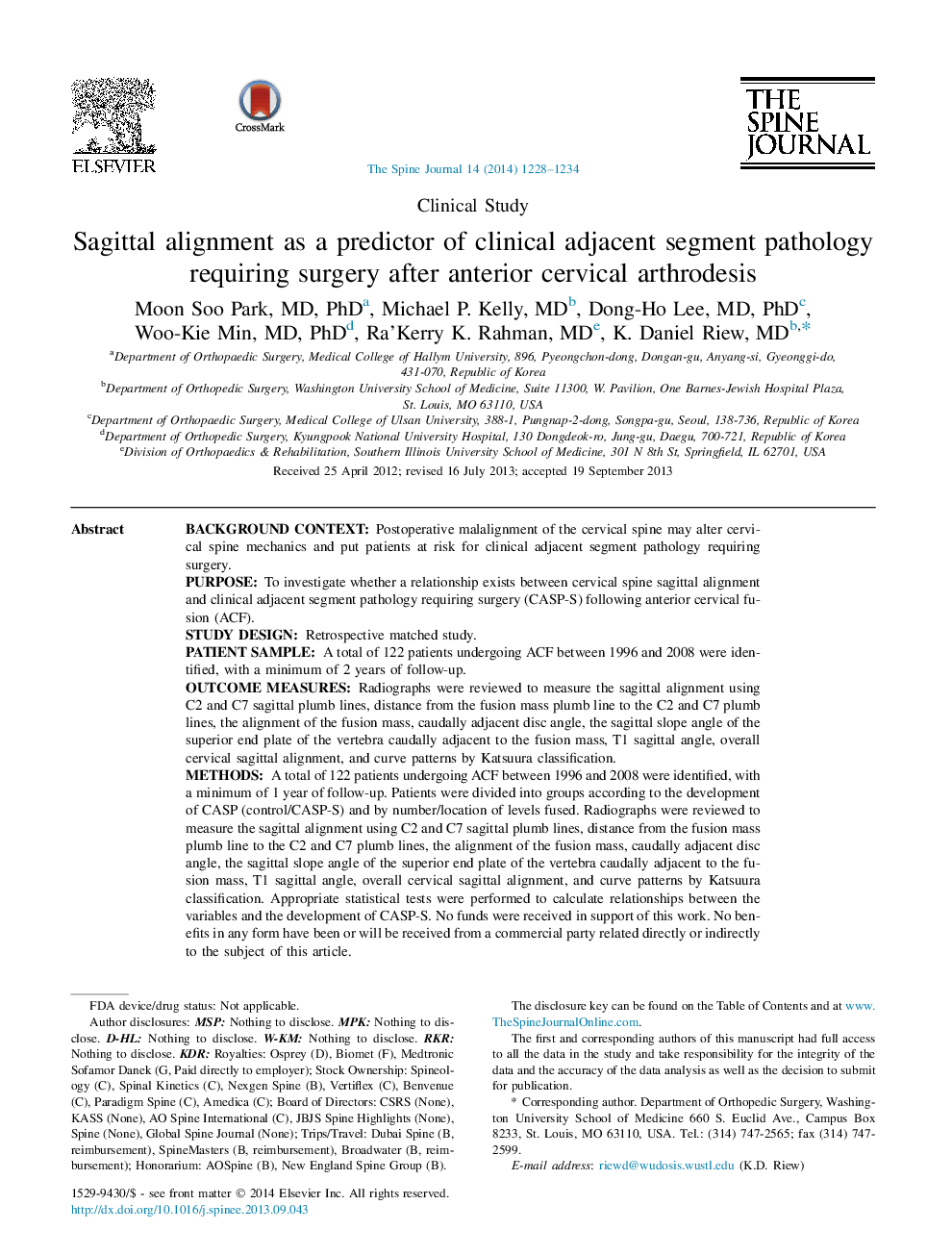| کد مقاله | کد نشریه | سال انتشار | مقاله انگلیسی | نسخه تمام متن |
|---|---|---|---|---|
| 6212372 | 1268577 | 2014 | 7 صفحه PDF | دانلود رایگان |

Background contextPostoperative malalignment of the cervical spine may alter cervical spine mechanics and put patients at risk for clinical adjacent segment pathology requiring surgery.PurposeTo investigate whether a relationship exists between cervical spine sagittal alignment and clinical adjacent segment pathology requiring surgery (CASP-S) following anterior cervical fusion (ACF).Study designRetrospective matched study.Patient sampleA total of 122 patients undergoing ACF between 1996 and 2008 were identified, with a minimum of 2 years of follow-up.Outcome measuresRadiographs were reviewed to measure the sagittal alignment using C2 and C7 sagittal plumb lines, distance from the fusion mass plumb line to the C2 and C7 plumb lines, the alignment of the fusion mass, caudally adjacent disc angle, the sagittal slope angle of the superior end plate of the vertebra caudally adjacent to the fusion mass, T1 sagittal angle, overall cervical sagittal alignment, and curve patterns by Katsuura classification.MethodsA total of 122 patients undergoing ACF between 1996 and 2008 were identified, with a minimum of 1 year of follow-up. Patients were divided into groups according to the development of CASP (control/CASP-S) and by number/location of levels fused. Radiographs were reviewed to measure the sagittal alignment using C2 and C7 sagittal plumb lines, distance from the fusion mass plumb line to the C2 and C7 plumb lines, the alignment of the fusion mass, caudally adjacent disc angle, the sagittal slope angle of the superior end plate of the vertebra caudally adjacent to the fusion mass, T1 sagittal angle, overall cervical sagittal alignment, and curve patterns by Katsuura classification. Appropriate statistical tests were performed to calculate relationships between the variables and the development of CASP-S. No funds were received in support of this work. No benefits in any form have been or will be received from a commercial party related directly or indirectly to the subject of this article.ResultsThe groups were similar with regard to demographic and surgical variables. Lordosis was preserved in 82% (50/61) of the control group but in only 66% (40/61) of the CASP-S group (p=.033). More patients with a straight curve pattern developed CASP-S. The distance from the C2 to the C7 plumb line and T1 sagittal slope angle were lower in the CASP-S group with C5-C6 fusions compared with the control group. Also, the distance from C5-C6 fusion mass to C7 plumb line and C7 sagittal slope angle were lower in the CASP-S group with C5-C6 fusions.ConclusionsOur results suggest that malalignment of the cervical spine following an ACF at C5-C6 has an effect on the development of clinical adjacent segment pathology requiring surgery.
Journal: The Spine Journal - Volume 14, Issue 7, 1 July 2014, Pages 1228-1234